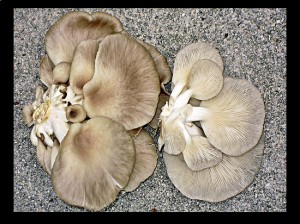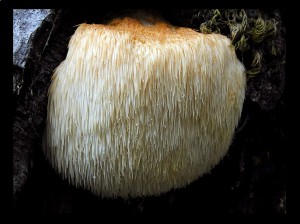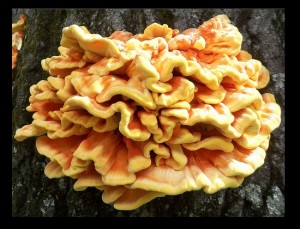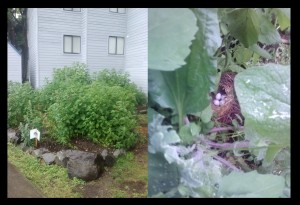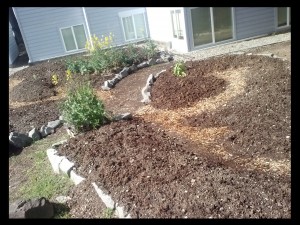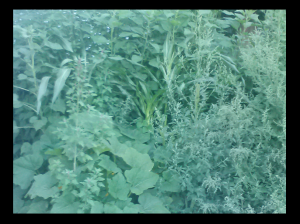By Joe Anderson, RAD Sustainability Lead Predecessor.
RAD Sustainability worked on inoculating cardboard with oyster mushroom spawn. Cardboard is a great medium to establish a mushroom colony with because it’s flat and easy to transport. Once it’s completely covered with mycelium, you just slap it down where you want mushrooms to grow, give them some substrate to digest, and they are ready to go.
We used pearl oyster sawdust spawn from Fungi Perfecti to make our cardboard colonies. First, we soaked our cardboard overnight to make it soft and moist, just how our mushrooms like it. Then we mixed up the sawdust spawn with water and shredded it up by hand as much as possible.
We laid down a piece of cardboard and peeled off the first layer and set it aside, revealing the corrugations. Next, we threw on a few heaping handfuls of oyster spawn and worked it into the grooves. Finally, we placed the first cardboard layer back over the inoculated cardboard and repeated the process, stacking up the cardboard spawn layer by layer.
And that’s all there is to it! It takes about three weeks for oysters to colonize the cardboard. When they’re ready, we’re going to sandwich them in towers of straw which they’ll consume in a few months before fruiting. Until then, we have to keep them moist and watch out for mold or any other contamination. I’ve been checking on our cardboard spawn each morning, and I can already see them starting to take hold!
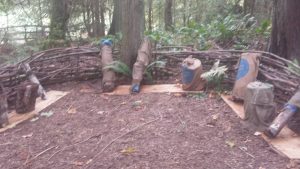
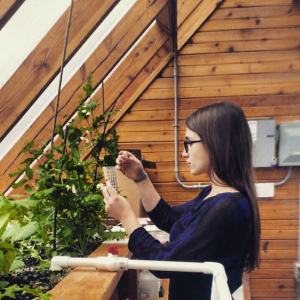 also paying for calcium and potassium API Water testing kits so we can better understand the nutrient levels cycling in the water. Ammonia, Nitrite, Nitrate, and pH levels are tested daily.
also paying for calcium and potassium API Water testing kits so we can better understand the nutrient levels cycling in the water. Ammonia, Nitrite, Nitrate, and pH levels are tested daily.
